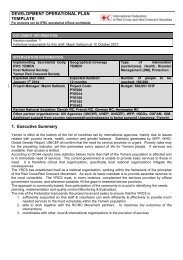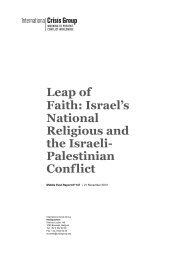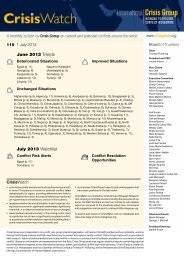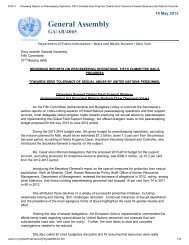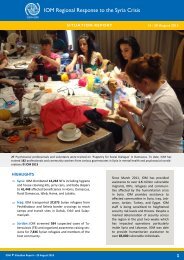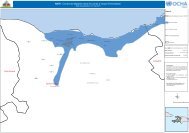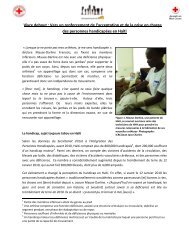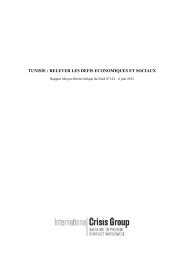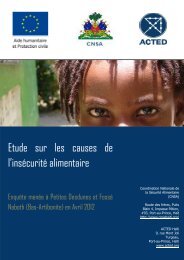SOMALI NUTRITION STRATEGY 2011 – 2013 - ReliefWeb
SOMALI NUTRITION STRATEGY 2011 – 2013 - ReliefWeb
SOMALI NUTRITION STRATEGY 2011 – 2013 - ReliefWeb
You also want an ePaper? Increase the reach of your titles
YUMPU automatically turns print PDFs into web optimized ePapers that Google loves.
36<br />
5.2 Nutrition is integrated into the policies, strategies,<br />
activities, delivery mechanisms and outcomes of<br />
WASH, livelihoods, education and food aid sectors<br />
Activities:<br />
5.1.1 Foster improved intersectoral collaboration &<br />
define priority areas for partnership<br />
management of relevant<br />
communicable and non<br />
communicable diseases eg TB,<br />
HIV, malaria, mental health<br />
5.2a WASH<br />
50% of relevant WASH<br />
interventions include nutrition<br />
indicators as measure of impact<br />
75% nutrition programmes<br />
delivering good hygiene promotion<br />
activities<br />
5.2b Agriculture/Livelihoods<br />
70% relevant projects incorporating<br />
nutrition indicators as outcome<br />
indicators,<br />
70% relevant projects use nutrition<br />
status for targeting interventions<br />
70% relevant projects include<br />
nutrition education as a supporting<br />
activity<br />
5.2c Education<br />
70% schools provide nutrition<br />
education as part of regular<br />
curriculum<br />
5.1.1a number of intersectoral<br />
consultation meetings held<br />
5.1.1b x% attendance at sector<br />
Review of policies and<br />
projects<br />
Review of policies and<br />
projects<br />
Review of curricula<br />
School reports<br />
Willingness of health sector to<br />
collaborate<br />
Sufficient resources available<br />
Meeting reports Willingness of other sectors to<br />
collaborate




